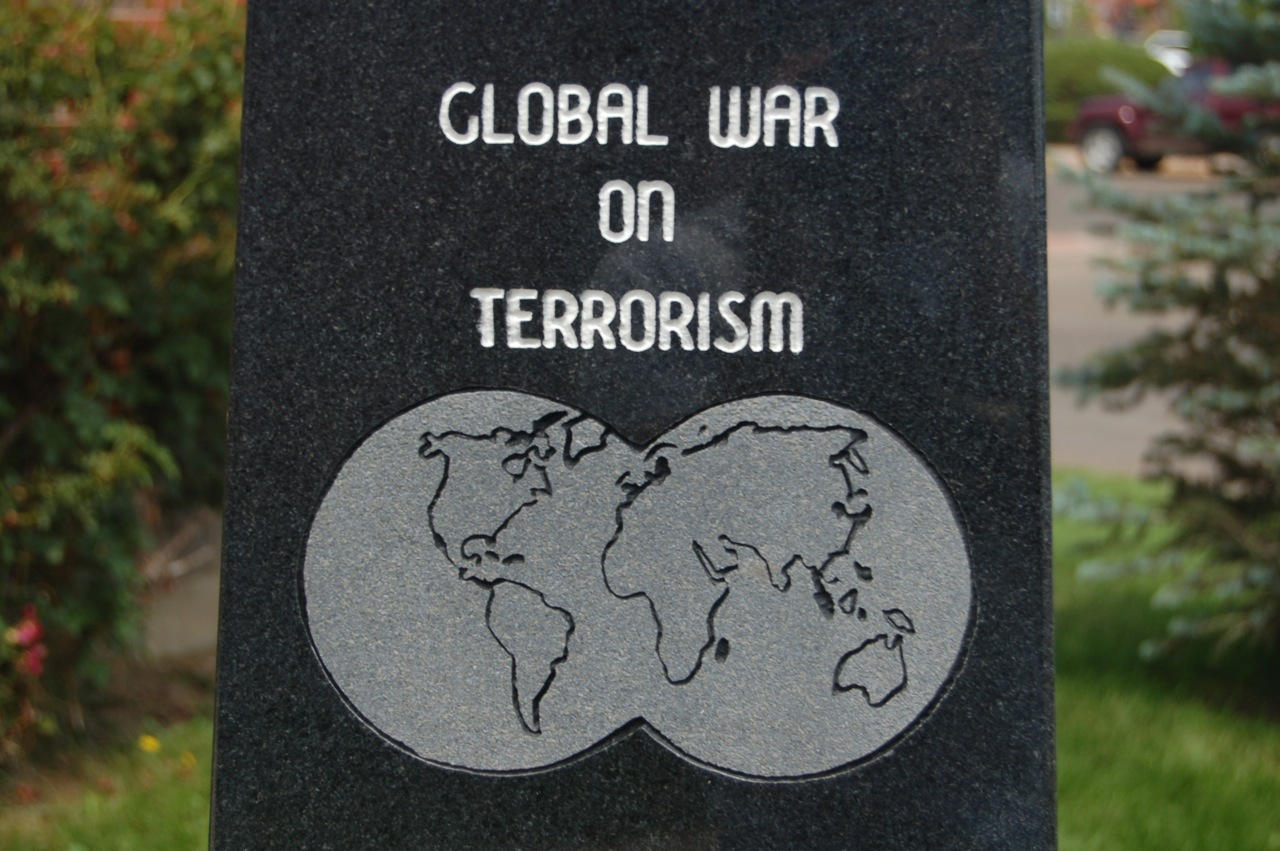Juan Salamanca / Contributing writer
opinion@fiusm.com
The drummers of war play a steady beat.
It’s that old tune you know all the words to; the one about the vicious enemy in the Middle East that must be annihilated, the barbaric force of nature that’s making a beeline straight to your backyard.
Yes, that’s right; you’re not safe. Look around, your picket fences and impeccable lawns and other artifacts of whiteness won’t save you now. The caliphate’s coming to America, baby, and there’s only one way to stop ‘em: unadulterated violence.
Don’t you see, as our lovely friends at the FBI tell us, the army of homebrew jihadists that are ready to blow something in the homeland sky high?
If you were to base your entire understanding and knowledge of DAESH (known to most as ISIS) on FBI reports and other government sources (and you probably are doing just that) you’d think that we live in a world of terror, an Islamist menace always waiting to attack across the US-Mexican border in a politically convenient manner.
Yet that begs the question: does this terrifying picture reflect reality?
The answer is a solid “no.”
We are all familiar with the ludicrous campaign on the part of the United States government to predict the likeliness and severity of a terrorist attack, as if terrorist attacks could be quantified in much the same manner that weather is.
The stated purpose of such “terror warnings” is to ensure that if the people “see something” that they “say something” and to mobilize law enforcement and other branches of the American security apparatus to defend the homeland in the event of an attack.
Thus far, none of the “elevated threat warnings” and other scaremongering predictions by the establishment commentariat have actually resulted in stopped attacks, or indeed evidence at all that such attacks were to occur. Of 40 warnings issued in the past fifteen years, not one of them made an accurate prediction.
What of all the members of DAESH, the new adopted name for ISIS, sleeper cells that the FBI arrests every week?
These stories are often uncritically parroted by the media as evidence of the growing DAESH threat in America, usually presented with slick graphics that with each passing day grow indistinguishable from Stephen Colbert’s “Doom Bunker.” Yet a close reading of all these stories reveal a pattern: an angry, poorly adjusted American male youth, usually black, converts to Islam and draws the attention of the FBI through his Internet browsing activities. He is then contacted out of the blue by a mysterious man claiming to be an operative in a terrorist sleeper cell and pressuring the Jihadist-to-be to buy a weapon. Goaded on by the operative and often socially isolated, the individual then arranges to meet with his new contact with the weapon, only to find their new friend is an FBI informant and that they’ve fallen victim to a sting operation. This practice has been criticized by U.S. judges presiding over these cases as far back as 2010, with District Judge Colleen McMahon arguing that “I believe beyond a shadow of a doubt that there would have been no crime [in the case of four men on terrorism charges in Newburgh, NY] except the government instigated it, planned it and brought it to fruition.”
These arrests are presented as the capture of authentic DAESH members, when in virtually all these cases the only contact with any sort of terrorist organization the victims of these sting operations have are with FBI informants. In most cases, the terrorism charge is usually dropped and the victim is convicted of a gun charge based on a gun that was sold to them by the FBI itself. (story stops here. The rest at FIUSM)
Beneath the veneer of “homeland security,” the United States government and the American media have been conducting a campaign of propaganda and fear. The politico-media complex of the United States, beyond the innocent children’s toy ads and friendly morning show antics, is the bloodthirsty voice of the American war machine, preaching the gospel of violence as the bringer of freedom and the destruction of non-Western bodies as their humanitarian salvation. The construction of the DAESH threat by American media is from the same strain of lies that dragged the American public into the Second Iraq War. Grainy and ominous images of faceless Islamist fundamentalists flood TV screens nightly, attempting to whip up the public into a post-9/11 style war frenzy. Electoral debates devolve into infantile contests based on who can rattle their saber the most at DAESH. Arguing against “going after them” is now political cyanide. Peace is politically incorrect. Laying down arms is just short of treason. Refusing to flood a dangerous and unstable area with additional weaponry is weakness.
There is hope, however, the public is war weary. Humanitarian intervention, in vogue circa 1999 during the Kosovo conflict and up to the end of the Second Iraq war, won’t cause the American public to pull the trigger on war anymore. This means that how the public reacts to the national security alarmism is critical to building support for new wars (a grimly regular occurrence in American history.)
War is at our doorstep. Our national institutions of press and governance are dead set in sending our brothers and sisters, friends, sons and daughters and mothers and fathers to kill many like them and to die in a misguided military adventure. Will we allow them to?






Be the first to comment on "Is DAESH really in the US?"